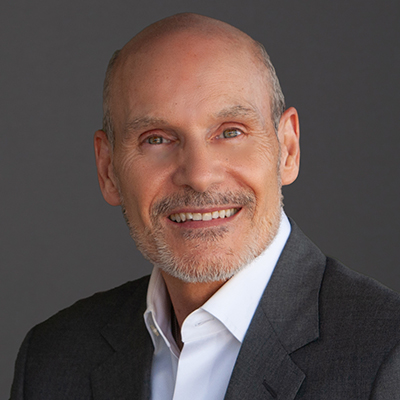Family Offices and SPACs Part I: SPAC Overview and the Current Market
The latter half of 2020 saw an explosion in the number of SPACs raised and transactions consummated by them. Despite their growing popularity, many in the investment community still are not familiar with the SPAC vehicle or the particularities of transacting through or with a SPAC. In this two-part series, we will provide an overview of these vehicles and the current SPAC market, then address considerations for family offices that may sponsor or sell to SPACs.
I. The SPAC Comeback — What is a SPAC?
A special purpose acquisition company (“SPAC”) is not a new concept. SPACs became a popular investment vehicle in the 1980s and were often referred to as a “blank check” company. SPACs are shell companies with no commercial operations; they are formed by a sponsor strictly to raise capital through an IPO for purposes of consummating a business combination, which is usually an acquisition of a private operating company.
Typically, the SPAC issues, in a traditional IPO, “units” consisting of one public share1 and a fraction of a warrant to purchase one public share.2 The units are listed on a stock exchange and trade like any other listed equity security. The holder of a unit may elect to split the unit into its stock and warrant components and to have these components trade separately. Important rights granted to holders of SPAC public units/shares include the right (i) to vote upon the initial business combination and (ii) to elect to have their public shares redeemed upon the closing of the initial business combination. This provides a SPAC public stockholder with significant optionality as the stockholder may split their units, vote in favor of or against the initial business combination, require their shares to be redeemed or retain the shares, but, in either case, retain the warrant portion of the unit.
The cash proceeds from the SPAC’s IPO are placed in a trust account that may only be used for limited purposes, mainly funding the initial business combination or shareholder redemptions in connection with the initial business combination or liquidation. A SPAC generally has 18 to 24 months to complete a business combination or liquidate.
II. Sponsor’s Role and Economics
The sponsor of a SPAC brings investment and/or operational expertise in a particular industry or business sector in which the SPAC will pursue a transaction. Recently, SPACs have become an attractive vehicle for traditional PE sponsors to raise money. This is due to many factors, including speed of formation and capital raise, the sponsor promote arrangements, and the ability to execute on individual investments without a pooling of returns. Investors invest behind the sponsor’s name recognition, reputation and network expecting those factors to lead to proprietary deal flow.
In return for sourcing a deal, sponsor economics typically take the following form: (a) “promote shares”3; (b) private placement warrants4; and (c) potentially, other private placement securities5 purchased by the sponsor. Sponsor promote shares and warrants will have no value unless a business combination is consummated. Unlike the public shares, the sponsor shares are not redeemable and are subject to a post-business combination “lock-up” (often 12 months with early release if trading price exceeds a specified threshold, typically $12.00 per share if IPO price was $10.00). Private placement warrants are usually identical to public warrants, except they are purchased separately from sponsor shares, typically contain a cashless exercise feature, and are not redeemable by the post-closing company (i.e., upside is not capped).
III. Recent SPAC Market Activity
With more than 255 SPACs completing IPOs since September 2020,6 the SPAC market exploded in 2020. Several of these SPACs have been significant in size, such as Pershing Square Tontine Holdings Ltd. ($4.0 billion IPO), sponsored by Pershing Square, and Churchill Capital III ($1.0 billion IPO) and Churchill Capital IV ($1.8 billion IPO), each sponsored by M. Klein and Co.
SPACs are also typically announcing business combinations at a faster rate than historically: From 2017–2019 the average number of days from IPO to business combination signing was 400 compared to just 73 days in 2020.
IV. Business Combination
The business combination may be structured as either a “cash-out” for target, a “reverse IPO” transaction or, recently, more often as a combination of the two. “Cash out” deals involve significant cash consideration to the target company’s equity holders, providing existing owners a return on investments and substantial reduction of equity holdings. In a reverse IPO, the existing owners will receive relatively little or no liquidity, but the private target company gains public status through a reverse merger with the SPAC and thus bypasses the majority of complex steps related to a traditional IPO process.
A reverse IPO through a “De-SPACing” transaction has many advantages over a traditional IPO for sellers of a target. For example, in a De-SPAC transaction, a company can (i) use projections in financials in marketing, (ii) confidentially negotiate prior to pricing, and (iii) utilize earn-out incentives in the terms of the transaction. In a traditional IPO, none of these terms are available. In addition, unlike a traditional IPO where pricing is subject to market risk, in a De-SPACing transaction the target company has pricing certainty through an up-front determination of equity value at signing. But perhaps the largest advantage of De-SPACing transaction compared to a traditional IPO is speed. A traditional IPO takes months whereas a De-SPACing transaction, in some cases, can be completed in several weeks. However, it is important to note, that the De-SPAC transaction involves many of the same requirements as would be applicable to a traditional IPO, including three years of audited financial statements and other disclosure items.
V. Current Market Trends in SPACs
Recently there has been a burst of reverse IPO SPACs, with many companies that are IPO candidates viewing a SPAC transaction as a better alternative to a traditional IPO. This trend means that SPAC sizes are growing — year over year the average SPAC proceeds have increased by over 275%. It also has resulted in SPACs targeting non-traditional SPAC targets, such as blue chip companies.
In an effort to mitigate any funding risk, sponsors often supplement SPAC IPO proceeds with a PIPE.7 In these types of PIPE transactions, the PIPE investor(s) receive via a private placement the SPAC's public securities, typically at a price equal to the SPAC IPO price8, in exchange for providing additional capital to the SPAC. During this marketing process, prospective PIPE investors receive material non-public information regarding the potential transaction the SPAC is pursuing. This restricts the PIPE investors from trading the SPAC securities. If the potential transaction is abandoned, no public disclosure is required by the SPAC and the information is no longer deemed to be material. SPACs’ use of PIPEs is evolving, more recently sponsors have received PIPE commitments at the time of the SPAC's IPO, granting the SPAC leverage when marketing and negotiating De-SPACing transactions.
SPACs are quickly becoming an investment vehicle that regularly touches family office portfolios. Whether it be a family office raising a SPAC, co-investing in a SPAC or selling one of the family office portfolio companies to a SPAC, SPACs are quickly becoming an integral part of the family office landscape. In Part II of this article, we will expand upon the ways in which family offices are utilizing SPACs, including key legal considerations associated with each category.
1. One public share is almost always initially offered at $10 per “unit.”↩
2. Public warrants typically have the following features: (i) exercise price of 15% above IPO “unit” price (i.e., $11.50 per full warrant); (ii) redeemable by post-closing company at $0.01 per warrant if the trading price exceeds a specified threshold following a business combination (typically $18 per share), which caps upside of public warrants; and (iii) typical exercise period is five years from the initial business combination.↩
3. A separate class of sponsor shares (or “promote”) that are equal to 20% of post-IPO shares of the SPAC and subject to anti-dilution protection in connection with a business combination (though anti-dilution is almost always waived by sponsor at the time of the business combination).↩
4. Private placement warrants purchased by sponsor (typically at $1 to $2 per warrant), with exercise price of 15% above IPO “unit” price (i.e., $11.50 per full warrant).↩
5. Other private placement securities purchased by sponsor (typically the same securities and offered at the same price as IPO).↩
6. As of February 1, 2021, year-to-date, 90 SPACs completed their IPOs and began trading publicly.↩
7. Private Investment in Public Equity.↩
8. The PIPE investor receives shares at a discount to the SPAC's current market trading price.↩




